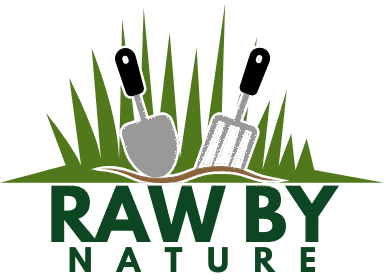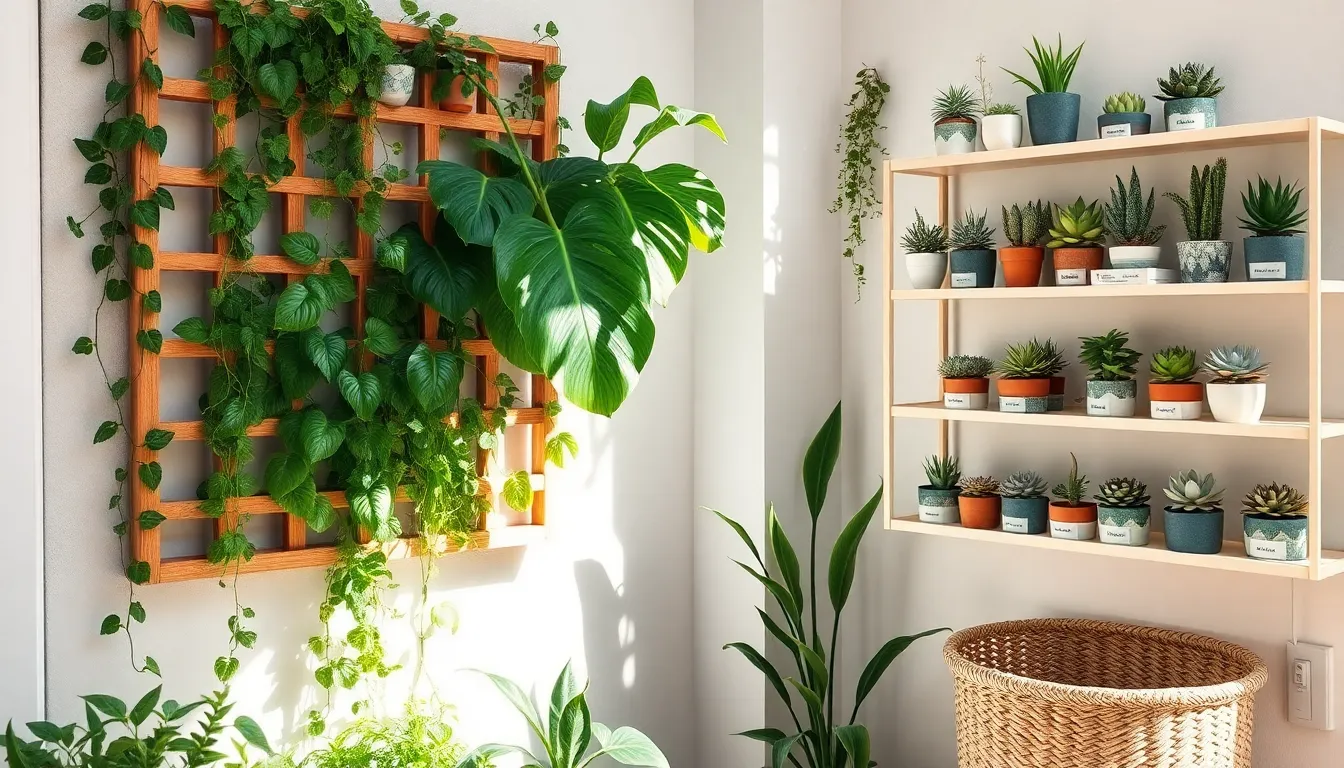Welcome to “Indoor Garden Ideas for Small Spaces,” where the art of gardening meets the charm of cozy living. Whether you’re a budding enthusiast just starting your green journey or a seasoned plant whisperer, this guide is your ticket to transforming even the tiniest of corners into lush, vibrant oases. With every page, you’ll find inspiration tailored for your unique space and skill level, ensuring that the joys of gardening are accessible to everyone.
In this guide, you’ll discover a variety of innovative designs that prove you don’t need a sprawling backyard to cultivate your green thumb. From vertical gardens to creative container setups, these ideas are curated to maximize space and foster thriving plants. Embrace the practical benefits of cleaner air, improved well-being, and a beautiful indoor environment, all while nurturing your passion for gardening. With our expert tips and techniques, you’ll feel empowered and excited to create a flourishing indoor garden that reflects your personal style and love for nature.
Utilize Vertical Plant Shelves
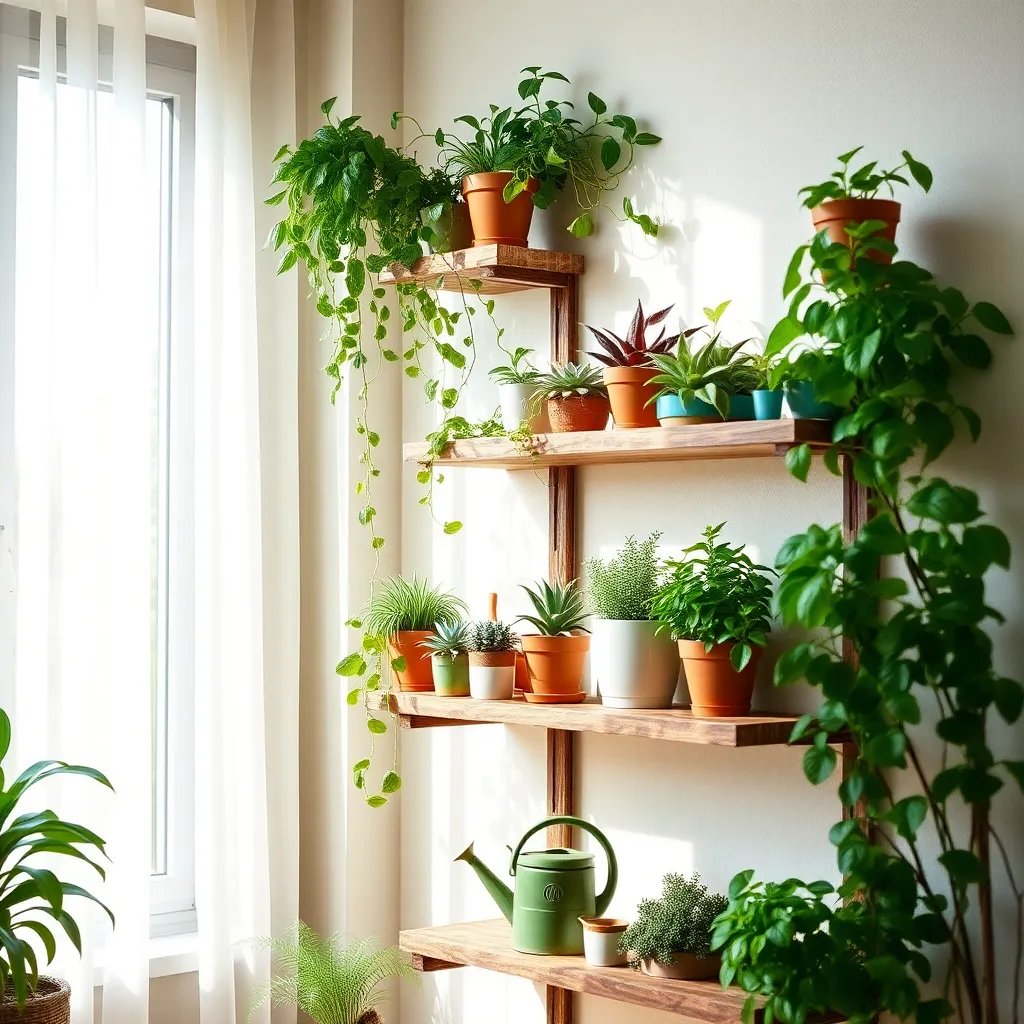
Maximize your indoor gardening space by incorporating vertical plant shelves, which allow you to grow more plants without taking up additional floor space. These shelves are perfect for small spaces, offering a stylish and efficient way to display a variety of plants.
To get started, choose sturdy shelves that can support the weight of your plants and pots. Consider materials like metal or wood, and ensure the shelves have sufficient depth to accommodate pots of various sizes.
Lighting is crucial when using vertical plant shelves. Place your shelves near a window that receives plenty of natural light, or invest in grow lights to ensure your plants receive adequate illumination.
Watering can be tricky with vertical arrangements, as water from upper shelves might drip onto lower ones. To avoid overwatering, use pots with good drainage and place a tray or saucer under each pot to catch excess water.
For beginners, start with hardy plants like pothos or spider plants, which thrive in a range of lighting conditions and are forgiving of occasional neglect. Advanced gardeners might experiment with herbs like basil or thyme, which not only add greenery but also serve culinary purposes.
To optimize plant health, use a well-draining potting mix appropriate for your plant types and fertilize every few weeks during the growing season. Regularly rotate your plants to ensure even growth and prune as needed to maintain their shape and health.
Choose Compact Plant Varieties
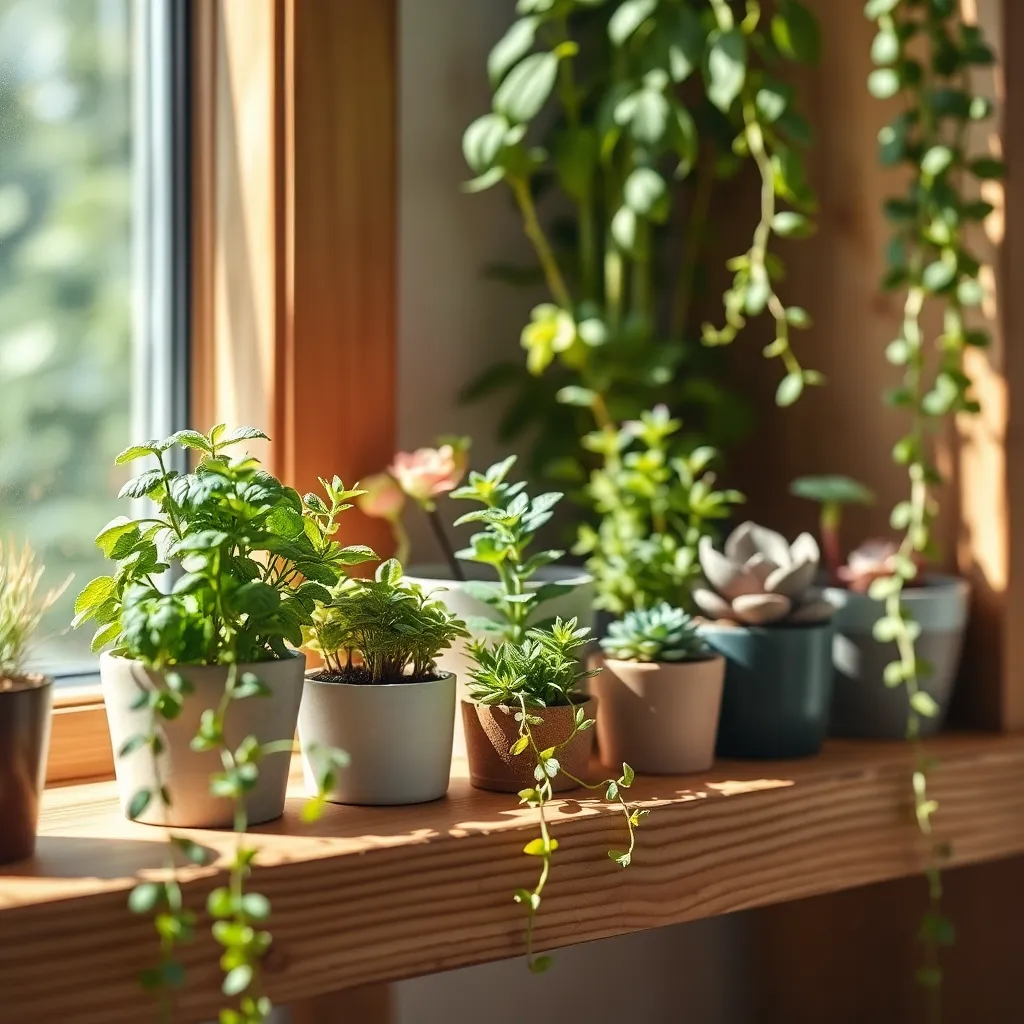
Choosing compact plant varieties is a smart strategy for maximizing small indoor spaces. These plants are perfect for areas with limited room, as they naturally maintain a smaller footprint while still offering lush foliage or blooms.
Consider succulents like Haworthia and Echeveria, which thrive in bright light and require watering only when the soil is completely dry. These low-maintenance options are ideal for beginners, as they can adapt to the dry air typically found indoors.
For those seeking flowering options, African Violets are an excellent choice. They prefer indirect sunlight and need to be watered from the bottom to prevent leaf spots, making them a unique addition to window sills or small tables.
Advanced gardeners might explore bonsai trees, which combine artistry with horticulture. Bonsai require specific care such as regular pruning and repotting, but they offer a stunning focal point and a rewarding challenge for dedicated plant enthusiasts.
Incorporate Hanging Planters Strategically
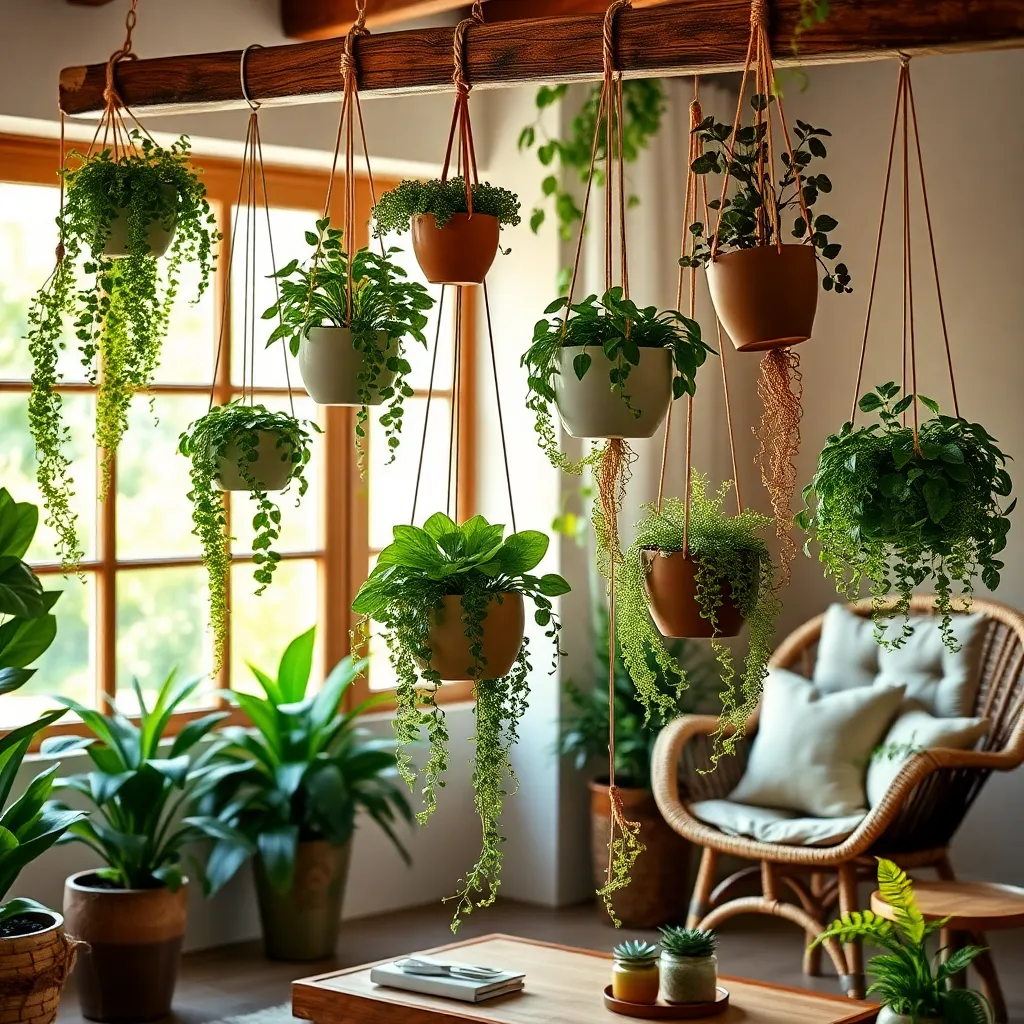
When space is at a premium, hanging planters offer a smart and stylish solution for indoor gardening. These planters maximize vertical space, allowing you to grow more plants without crowding your living area.
Start by selecting lightweight planters that are easy to install and can support the weight of your chosen plants. Consider materials like plastic or woven fabric, which are both durable and light, making them ideal for hanging setups.
For optimal plant health, choose plants that thrive in the specific light conditions of your space. Ferns and pothos are excellent choices for low-light areas, while succulents and spider plants flourish in brighter spots.
Ensure your hanging planters have adequate drainage to prevent waterlogging, which can lead to root rot. Add a layer of gravel at the bottom of each planter to facilitate drainage and use a high-quality potting mix tailored to your plant’s needs.
Watering can be tricky with hanging planters, so it’s essential to develop a consistent routine. Check the moisture level of the soil regularly by sticking your finger about an inch deep into the soil; water only if it feels dry.
Advanced gardeners can experiment with creating multi-level displays by layering plants with different growth habits. This not only adds visual interest but also replicates the natural canopy effect, promoting healthier plant growth through varied light exposure.
Maximize Light with Reflective Surfaces
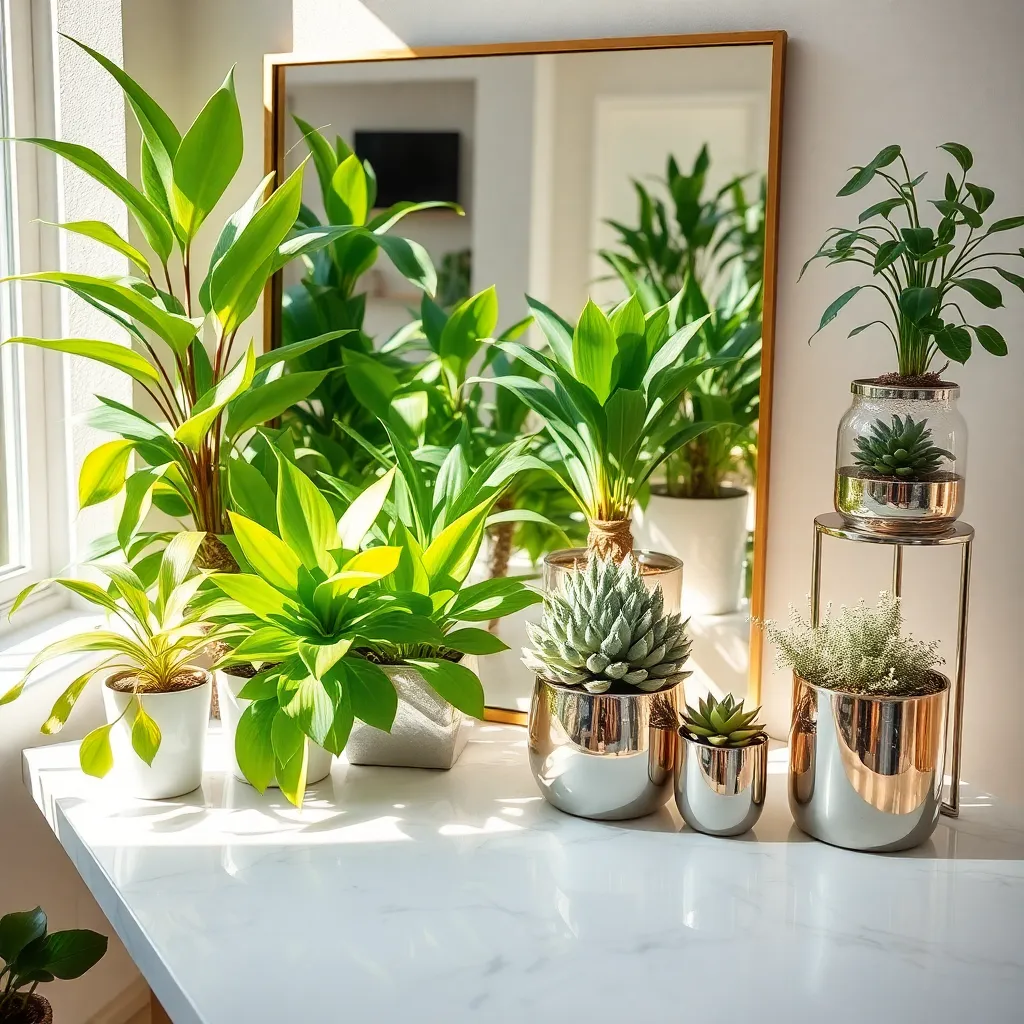
To make the most of your indoor garden, utilizing reflective surfaces can significantly enhance light distribution. Place mirrors or reflective panels behind your plants to amplify the available light, ensuring they receive more exposure even in dimly lit spaces.
Consider using reflective materials like aluminum foil or Mylar sheets, which can be easily shaped or cut to fit around your plants. This technique is especially beneficial during the winter months when natural light is limited, helping to maintain healthy growth.
For an advanced approach, position reflective surfaces at angles that direct light toward your plants’ undersides, promoting even growth. This is particularly useful for foliage-dense plants like ferns, where light struggle to penetrate thick canopies.
However, monitor your plants closely as increased light can also increase temperature, which may require more frequent watering. Always ensure that your plants remain in their optimal growing conditions by checking soil moisture levels regularly and adjusting care as needed.
Opt for Multi-Functional Plant Stands
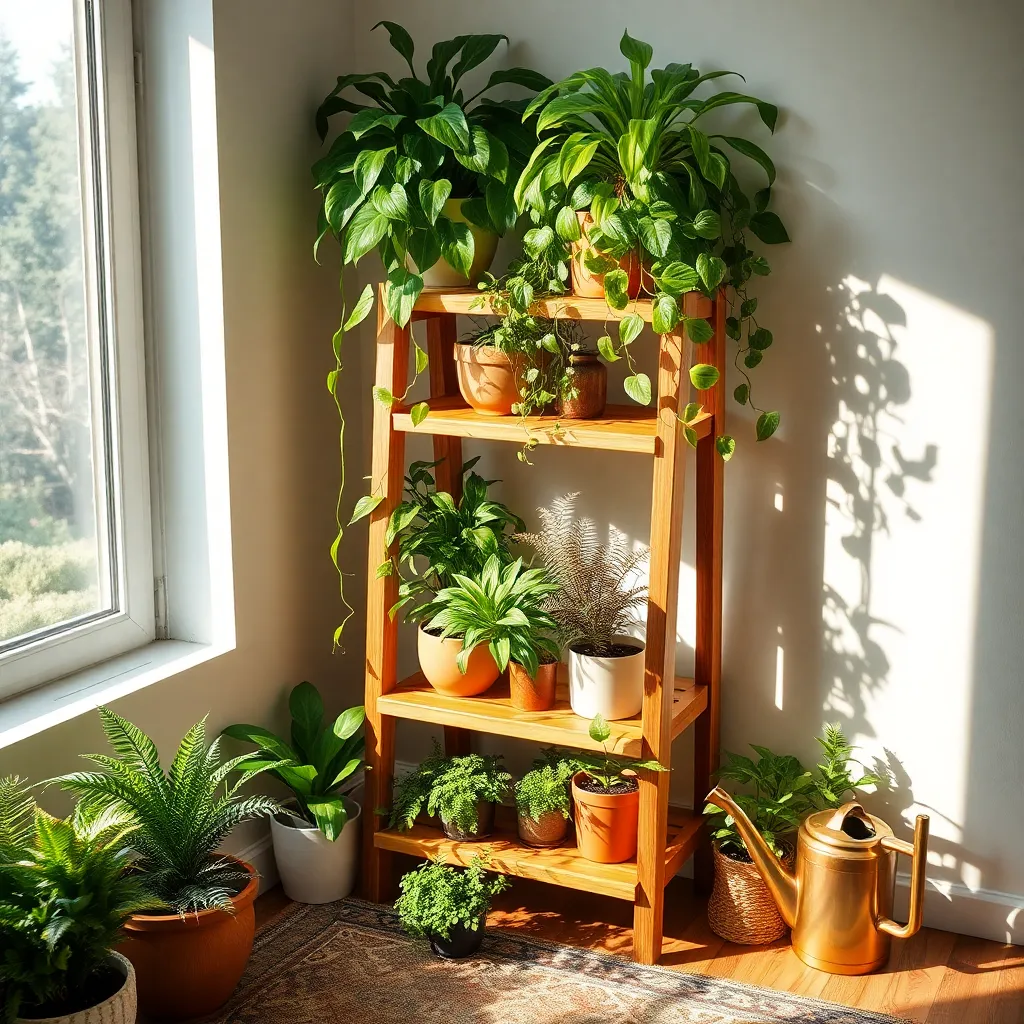
Creating an indoor garden in a small space can be challenging, but using multi-functional plant stands can help you make the most of your area. Choose plant stands that have multiple tiers to maximize vertical space, allowing you to display more plants without cluttering your floor.
Consider stands that come with built-in storage or shelves for gardening tools and supplies. This dual-purpose functionality keeps your gardening essentials within reach while maintaining a tidy and organized space.
Opt for plant stands made of materials like metal or bamboo, which are not only sturdy but also aesthetically pleasing. Ensure they are waterproof or have a protective finish to prevent damage from watering or humidity.
For beginners, try grouping plants with similar care requirements on the same stand. This approach simplifies watering and maintenance, as you can easily water all the plants at once without worrying about overwatering or underwatering.
Conclusion: Growing Success with These Plants
In exploring the nurturing world of indoor gardens, we’ve uncovered five key relationship concepts: the importance of cultivating a shared vision, the joy of nurturing growth together, the value of patience, the significance of adaptability, and the delight in celebrating small successes. These elements not only enhance our green spaces but also nurture our relationships, allowing them to flourish in harmony.
To take immediate action, consider starting a simple indoor garden project with your partner or family. Choose a few easy-to-grow plants and dedicate a small corner of your home to this shared endeavor. This simple step can transform your space and strengthen your bond as you care for your plants together.
Remember, relationships, like gardens, require ongoing attention and care. Bookmark this article as your go-to resource for cultivating both greenery and connection in your life. By revisiting these ideas, you’ll be equipped to nurture a thriving relationship, no matter the size of your space.
As you journey forward, embrace the potential of growth and connection in your relationships. With these principles in mind, you’re well on your way to creating a vibrant, flourishing partnership that stands the test of time.
